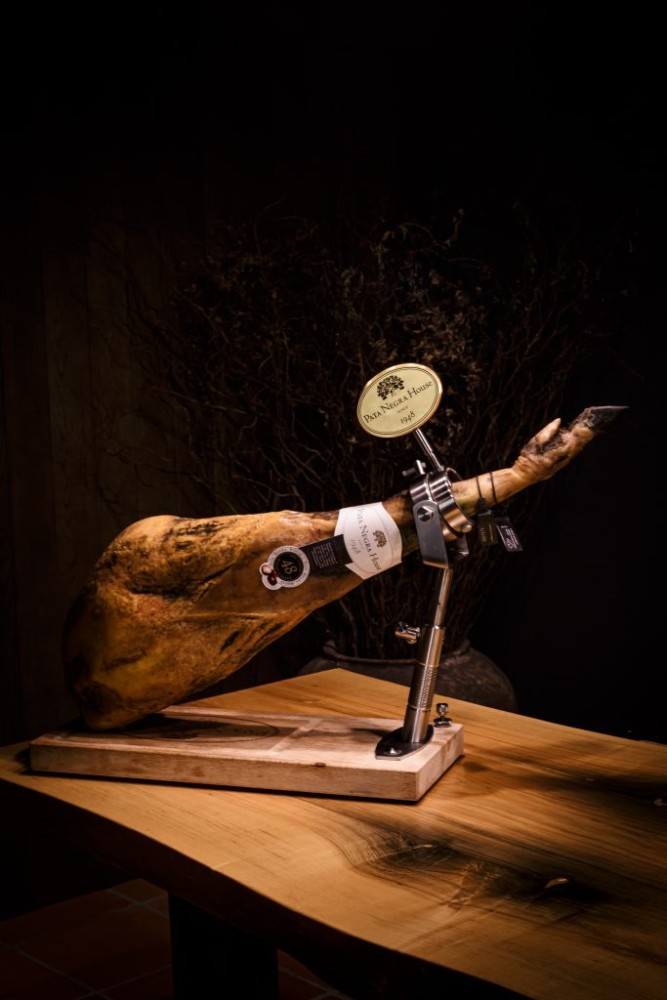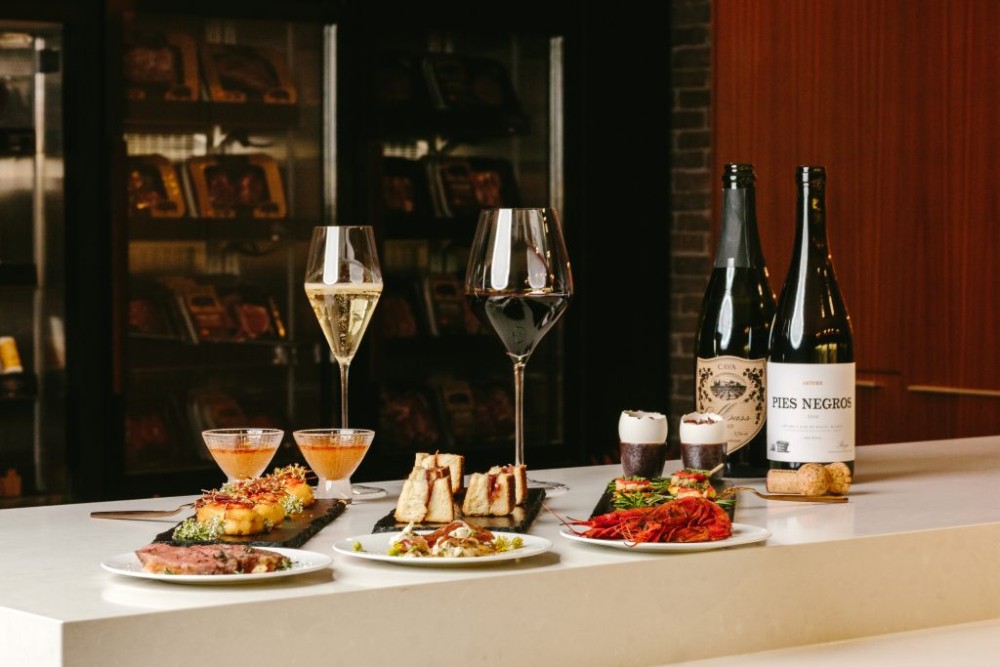Flavourful origins of the world's most exquisite aged hams
Nov 04, 2021
Whether aged for 10, 12, 32 or 48 months, a good aged ham tastes as delicious on its own as it does added to any dish. #legend talk to to the experts for a lesson in this moreish delicacy

Serrano, iberico or Parma. Selecting a good cured ham or jamon from the local deli can be overwhelming, as there are many types. Jamon is a dry-cured leg of ham produced in Spain and served sliced paper-thin, as a tapas or starter. In Italy, it’s known as prosciutto – and of the many regions of the country that produce it, Parma is the
most famous. Parma ham is from the hillsides around the Italian city and is recognised by its warm pink tone and slivers of white fat running down one side. It has a smooth, lightly salted taste that results from being air-cured
for 10 to 12 months. The ham comes from white pigs that are 20 to 24 months old.
Serrano ham refers to all dry-cured ham from Spain that is not Iberico. It comes from a similar breed of pig as Parma ham but is cured for 18 to 24 months, longer than its Italian counterpart, giving it a deeper firmer texture and a rich buttery taste. It’s often labelled as jamon curado, jamon reserve and jamon extra.
Iberico ham is the most prestigious as it comes from a breed of black pig in Spain, which is known as a delicacy. In Hong Kong, Pata Negra House has launched Asia’s first Iberico ham cellar where foodies can learn about and taste the different types and cuts of Iberico ham. The guided tour starts with Iberico Bellota – salami, chorizo and morcilla – the latter being similar to black pudding. These cuts make good canapés with a glass of cava.
The highlight is the ageing room housing five vintage Iberico hams, including a rare breed called Rubio Dorado. The vintage hams range from 32 to 60 months and are from the mountains of Salamanca in Guijuelo to the deep south of Andalusia near Jabugo. Some are fed acorns and others chestnuts, and it makes a difference to the taste.
Taste also differs in each part of the leg. For instance, the juiciest and most flavourful part of the leg is the furthest away from the hoof. However, if you like rich wagyu flavours, then the maza halfway down the leg is known as the richest part because of the fatty marbling. The contramaza behind the maza is less juicy because it has less fat. Nearer the hoof is the jarrete, known for its complex concentrated flavours, and which is usually sliced into cubes
instead of paper-thin for a firmer texture.

With so many choices, we asked Claudio Favero, chef de cuisine at Sabatini Ristorante Italiano, which type of jamon he chooses for his dishes. “We use two kinds of ham: 24-month Parma ham for classic Italian dishes with mozzarella or burrata as it doesn’t cover the flavour of the cheese,” he says. “We’re using the whole piece of ham with all the different textures.”
Favero also uses 48-month 100 per cent Iberico de Bellota. “This kind of ham is considered the best Iberico ham and we’re using the whole piece in our cuisine,” he explains. “We don’t make any difference between the part of the ham for a classic ham and melon, and also for some pasta sauce.”
A seasonal dish available until mid-October is Iberico or Parma ham with fresh figs, Italian porcini tossed with garlic
and parsley, and grilled smoked Scamorza cheese with a few drops of aged balsamic vinegar from Modena. “My personal favourite part of the Iberico ham is the end part as it has a stronger flavour and is more salted with a good grade of fat,” Favero says. “But for Parma ham, I prefer the middle part as it’s a bit more strong and not too dry.”

Chef Keith Yam at Giacomo in Crowne Plaza Hong Kong Causeway Bay says he likes every part of the leg. “Every part can showcase different flavours and textures for a dish, which is why I love creating new dishes based on different parts of the Iberico ham leg and experience how the nature of Iberico ham could work with other ingredients,” says Yam, who worked under the renowned Umberto Bombana for 10 years.
“One of our preferred aged hams is acorn-fed, 48-month Iberico ham (also known as Pata Negra). It embraces a strong nutty flavour; a good level of salinity, enough in saltiness but not as salty as other ham; and the fat is bright, smooth and extremely soft to the touch.”
One dish on his menu that uses this ham is homemade fettuccine with Pata Negra, datterino tomatoes and burrata
cheese fondue: “To maximise the flavours of the Iberico ham, the pasta stock is decocted by the 48-month acorn-fed Iberico ham and tomatoes. The sweetness from the tomatoes and the milky and buttery flavours from the burrata cheese temper the richness and balance the saltiness of the Iberico ham.”
Also see: 3 traditional Chinese dishes with unique origin stories



























